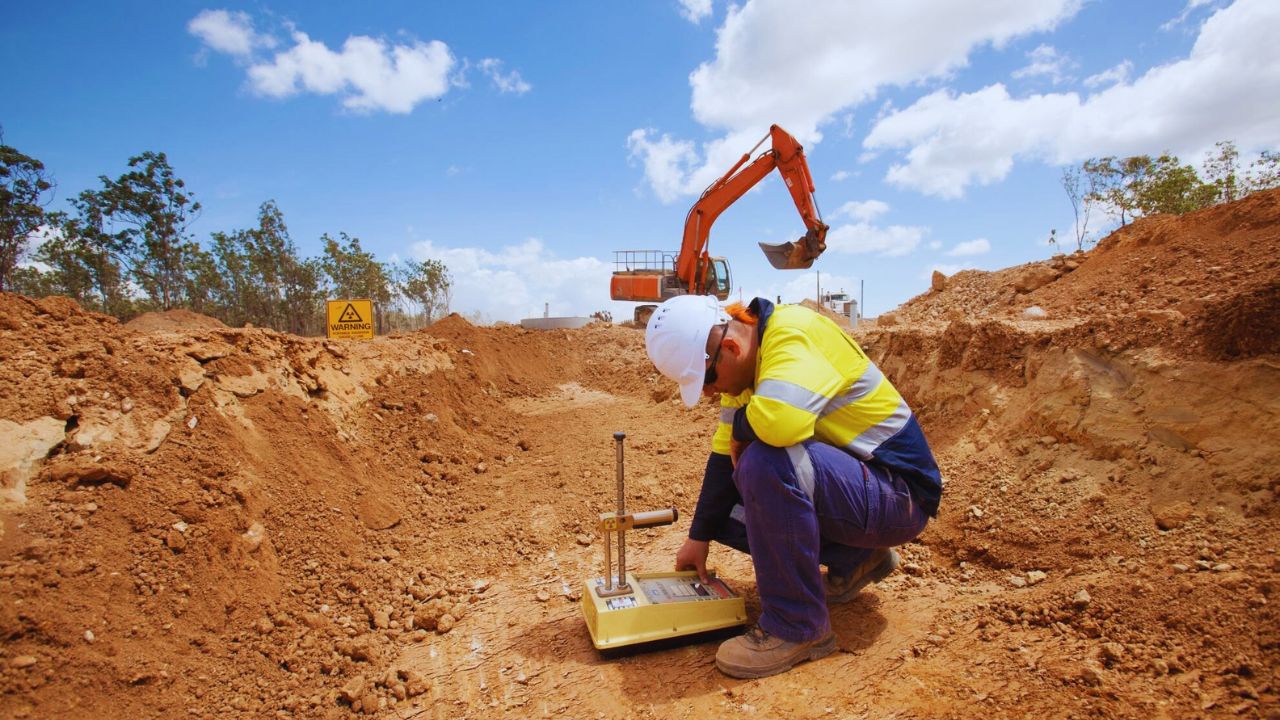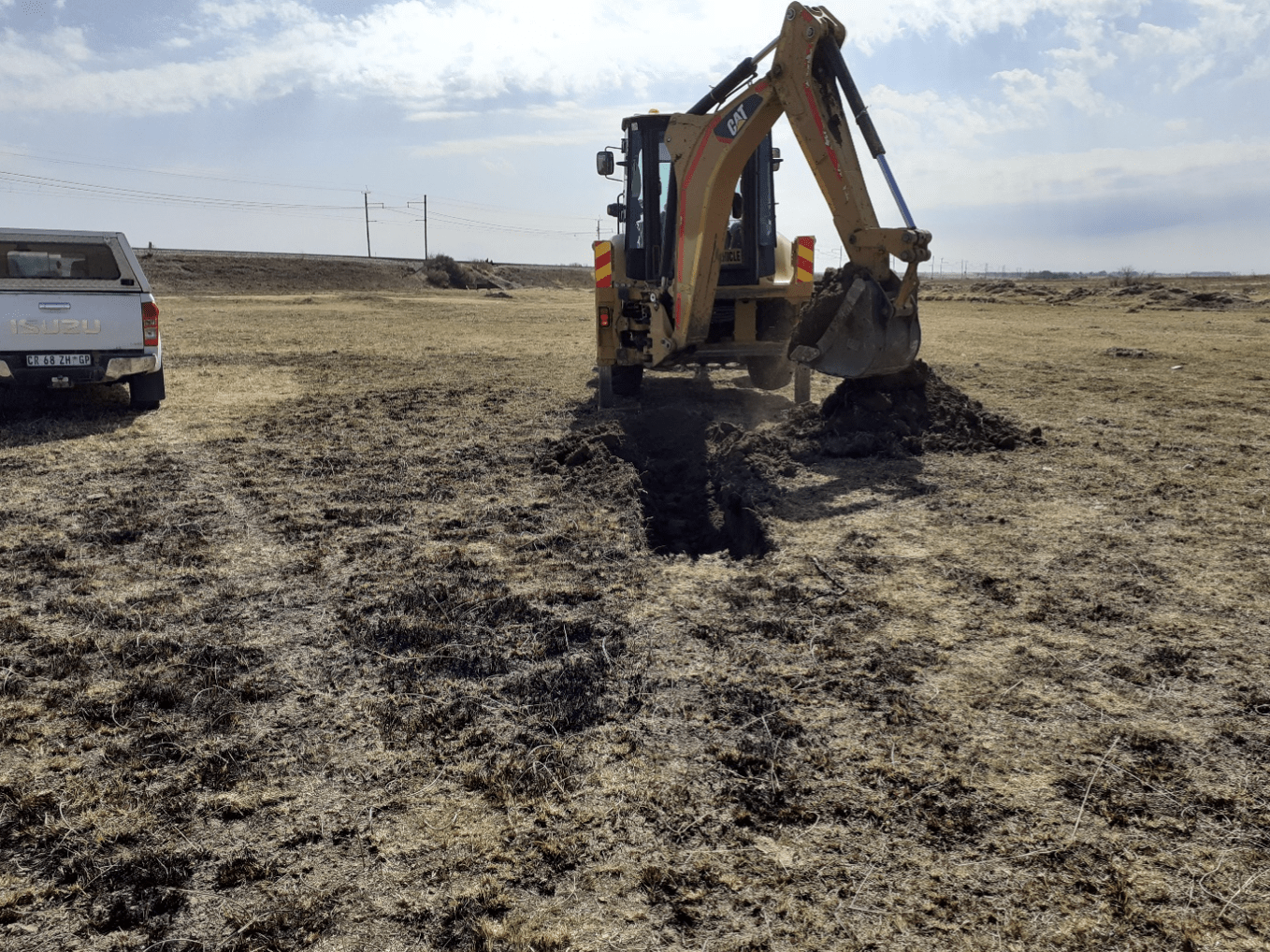Why All About Geotechnical Engineering Matters in Today's Infrastructure Advancement
Why All About Geotechnical Engineering Matters in Today's Infrastructure Advancement
Blog Article
The Value of Geotechnical Design in Resolving Ecological Difficulties and Enhancing Building And Construction Safety
Geotechnical design acts as a foundation in the junction of environmental stewardship and building safety, offering essential insights into the habits of soil and rock under numerous conditions. This discipline not only addresses pressing ecological challenges such as dirt erosion and groundwater defense yet likewise boosts the robustness of facilities versus all-natural hazards. By executing strategic site examinations and customized mitigation procedures, geotechnical designers play a crucial function in guarding both human lives and eco-friendly stability. The complexities of these obstacles increase crucial questions concerning the future direction of this field and its effects for lasting development.

Role of Geotechnical Design
Geotechnical design plays a crucial duty in the design and construction of facilities by attending to the actions of dirt and rock products under various conditions. This field of engineering is important for recognizing the interaction in between structures and the ground, which consists of figuring out the load-bearing capability of soil, evaluating stability, and anticipating possible settlement or failure.
Geotechnical designers are in charge of carrying out website investigations, which entail tasting and testing soil and rock to collect data on their chemical and physical residential or commercial properties. This information is vital for designing foundations, maintaining walls, and various other earth-retaining structures that guarantee security and longevity. Geotechnical design informs the selection of proper building approaches and products, thereby minimizing threats connected with soil actions.
Moreover, the combination of geotechnical design principles right into urban preparation and ecological administration is essential for resolving challenges such as ground contamination and groundwater administration. By comprehending geotechnical aspects, designers can establish lasting services that boost the strength of framework versus all-natural risks, while likewise advertising ecological stewardship. Ultimately, the function of geotechnical engineering is vital for attaining risk-free, resilient, and eco mindful building methods.
Dirt Disintegration Reduction
Soil disintegration poses a significant hazard to both environmental stability and infrastructure stability, impacting about 24 billion loads of abundant soil shed every year worldwide. This sensation is exacerbated by factors such as logging, urbanization, and poor farming practices. Geotechnical engineering plays a pivotal function in creating efficient dirt disintegration mitigation approaches that protect both the environment and building and construction jobs.
One technique requires the application of erosion control methods such as greenery growing, which stabilizes soil via root systems. In addition, the building and construction of maintaining balconies and walls can successfully minimize surface area overflow and safeguard at risk locations from disintegration. Correct water drainage design is also important; it minimizes water buildup and guides excess overflow away from important structures.
Additionally, geotechnical engineers use soil stablizing techniques, such as the application of geotextiles and biodegradable mats, to enhance soil cohesion and avoid deterioration - about geotechnical engineering. Regular surveillance and analysis of erosion-prone websites enable timely interventions, guaranteeing long-lasting sustainability. By integrating these strategies, geotechnical engineering not only minimizes the effects of dirt erosion yet additionally adds to the durability of facilities versus environmental challenges, inevitably promoting a more secure and extra sustainable built environment
Groundwater Security Techniques
Groundwater acts as a vital resource for drinking water, agriculture, and industrial procedures, making its protection crucial for ecological sustainability and public health. Efficient groundwater protection techniques are critical in minimizing contamination risks and guaranteeing the longevity of this source.

Normal surveillance of groundwater quality is go to my site also essential, allowing very early detection of contamination sources and promoting timely remediation efforts. Employing sophisticated modern technologies, such as geophysical studies and remote sensing, help in identifying possible hazards to groundwater books.
Additionally, public education and stakeholder engagement are important, fostering community support for groundwater defense campaigns. geotechnical engineer description. By integrating governing steps, technological improvements, and neighborhood participation, we can develop an extensive framework that safeguards groundwater resources while advertising lasting development and building and construction techniques
Landslide Danger Monitoring
Landslides pose considerable threats to both human safety and security and infrastructure, making reliable threat management methods crucial. Geotechnical engineering plays an essential role in identifying, evaluating, and mitigating landslide dangers. An extensive understanding click for more info of incline security, dirt mechanics, and hydrology is important for establishing effective danger administration plans.
The very first step in landslide risk monitoring involves extensive site investigations, which include geological mapping and soil screening. These investigations help engineers assess the possibility for landslides by identifying crucial elements such as slope angles, soil structure, and water material. Utilizing sophisticated modern technologies such as remote noticing and geophysical surveys can enhance the accuracy of these analyses.
Once risks are recognized, ideal mitigation procedures can be executed. These may include engineering solutions such as preserving walls, water drainage systems, and slope stablizing strategies. Keeping an eye on systems ought to be developed to detect indicators of ground activity and changes in water levels, permitting for aggressive interventions.

Enhancing Building Safety
Building websites frequently present a myriad of risks that can threaten worker safety and job stability. Geotechnical engineering plays a critical duty in improving building security by supplying important understandings into subsurface problems. Via comprehensive dirt and rock analysis, geotechnical engineers can recognize prospective risks, such as soil instability, groundwater concerns, and seismic vulnerabilities, which may compromise the safety and security of construction tasks.
Implementing geotechnical services, such as proper structure layout and making use of preserving structures, mitigates these risks substantially. These solutions not just ensure the stability of the frameworks being developed yet also develop a much safer working setting for building browse around these guys and construction workers. Furthermore, strenuous surveillance and assessment of website problems throughout the building and construction procedure are crucial. Making use of advanced innovations like ground-penetrating radar and inclinometer systems allows real-time data collection, permitting timely interventions when threats are spotted.
Moreover, cultivating a culture of security via training and adherence to developed security procedures further boosts construction site security. By incorporating geotechnical experience right into the preparation and execution stages, building projects can accomplish higher safety standards, eventually shielding workers and making sure effective job completion.
Conclusion
In final thought, geotechnical engineering functions as a vital discipline in promoting and taking on environmental obstacles building and construction security. Through efficient dirt erosion reduction, groundwater protection approaches, and landslide threat administration, geotechnical engineers add to the advancement of durable framework. The assimilation of these methods fosters a safer building and construction environment and boosts the sustainability of civil design tasks. Inevitably, the expertise of geotechnical designers is vital in safeguarding both natural deposits and human lives against potential risks.
Geotechnical engineering serves as a keystone in the intersection of environmental stewardship and construction security, giving crucial insights into the actions of dirt and rock under different problems. Geotechnical engineering informs the option of proper building and construction approaches and products, therefore reducing threats associated with soil habits.
Geotechnical engineering plays a critical function in creating reliable dirt disintegration reduction methods that secure both the setting and construction tasks.
Moreover, geotechnical engineers use dirt stablizing techniques, such as the application of geotextiles and naturally degradable mats, to improve soil cohesion and stop destruction. With detailed soil and rock evaluation, geotechnical engineers can recognize possible dangers, such as dirt instability, groundwater problems, and seismic susceptabilities, which might compromise the security of building and construction tasks.
Report this page